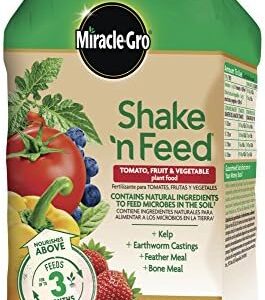As we go about our daily lives, it’s easy to forget about the small creatures that play a crucial role in our ecosystem. Bees are one such creature that often go unnoticed, yet they are essential for pollinating plants and providing us with fruits, vegetables, and other crops that we rely on for food. Unfortunately, bees are facing multiple threats to their populations, including habitat loss, pesticides, and climate change.
But there is something we can all do to help bees thrive – plant more flowers and create habitats that support bee populations. Planting for pollinators is a simple and effective way to provide bees with the resources they need to survive and thrive. By choosing the right plants and creating a bee-friendly environment, you can help support bee populations and ensure that they continue to play their vital role in our ecosystem.
When it comes to planting for pollinators, there are a few key things to keep in mind. First and foremost, choose a variety of flowering plants that provide bees with a diverse range of nectar and pollen sources. Bees are attracted to a wide range of flower shapes, sizes, and colors, so mix it up and include a variety of plants in your garden or yard. Some good options to consider include bee balm, sunflowers, lavender, and zinnias.
Another important factor to consider when planting for pollinators is the timing of blooming plants. Bees need food sources throughout the year, so be sure to include plants that bloom at different times of the year. This will ensure that bees have access to nectar and pollen throughout the growing season, helping them to thrive and reproduce.
In addition to choosing the right plants, it’s also important to create a bee-friendly habitat in your garden or yard. Bees need shelter, water, and nesting sites in addition to food sources, so be sure to provide them with everything they need to thrive. Consider adding a bee hotel or nesting box to your garden, as well as a shallow dish of water for bees to drink from.
It’s also important to avoid using pesticides in your garden, as these chemicals can harm bees and other pollinators. Instead, opt for natural pest control methods and organic gardening practices to keep your plants healthy without harming bees.
Creating a bee-friendly garden isn’t just good for bees – it’s also good for you and the environment. By planting for pollinators, you’ll attract a wide range of beneficial insects to your garden, helping to balance the ecosystem and reduce the need for harmful pesticides. You’ll also enjoy a more beautiful and vibrant garden full of colorful flowers and buzzing bees.
In addition to helping bees thrive, planting for pollinators can also have a positive impact on other wildlife and the environment as a whole. Bees are just one of many pollinators that play a crucial role in pollinating plants and supporting biodiversity. By creating habitats that support bees, you’ll also provide resources for other pollinators, such as butterflies, birds, and bats. This will help to create a diverse and healthy ecosystem that benefits us all.
So why not take the time to plant for pollinators and help bees thrive? It’s a simple and effective way to make a positive impact on the environment and support an essential part of our ecosystem. Whether you have a small garden, a balcony, or a large yard, there are many ways to create a bee-friendly habitat and provide bees with the resources they need to survive and thrive. So get out there, get planting, and help bees thrive for generations to come.






